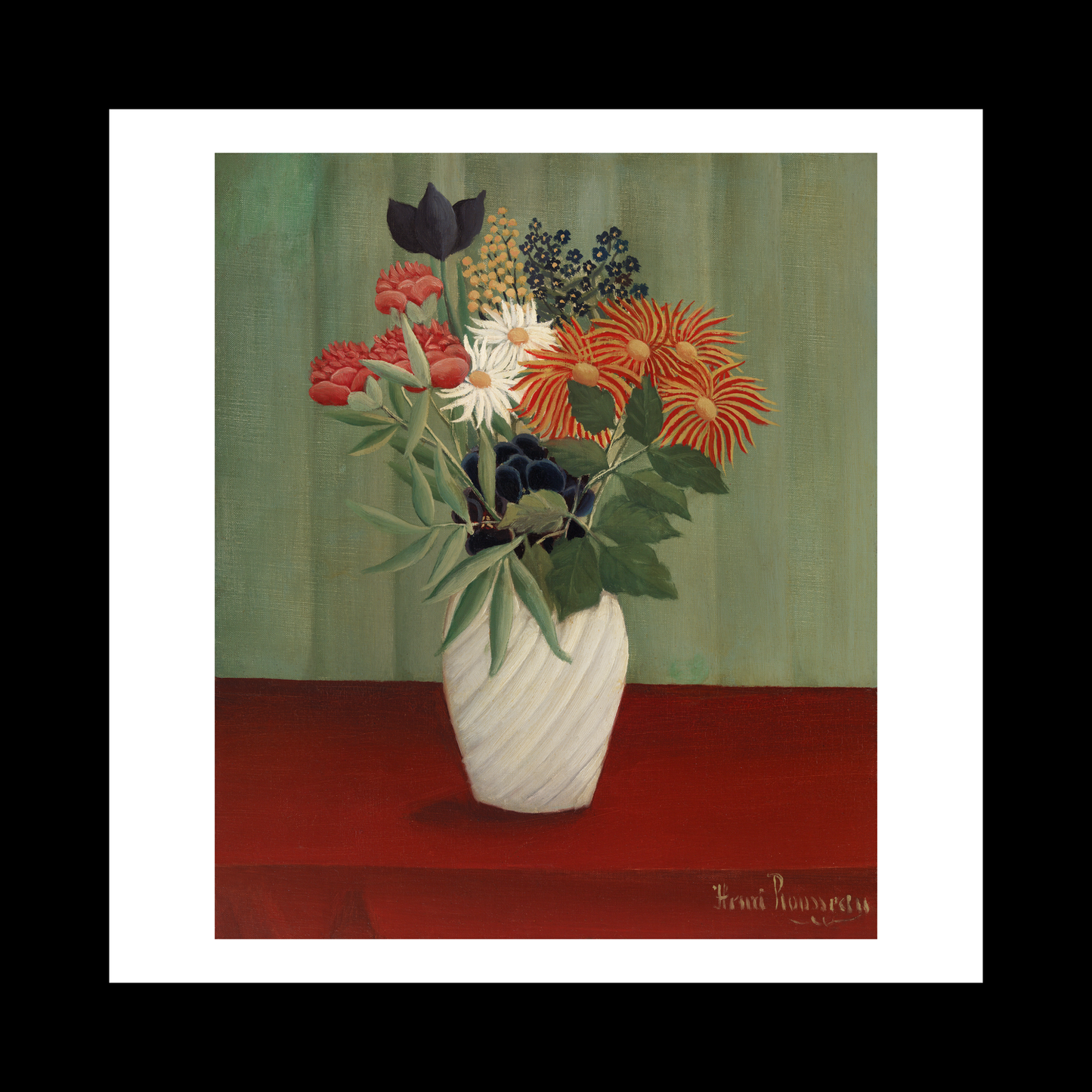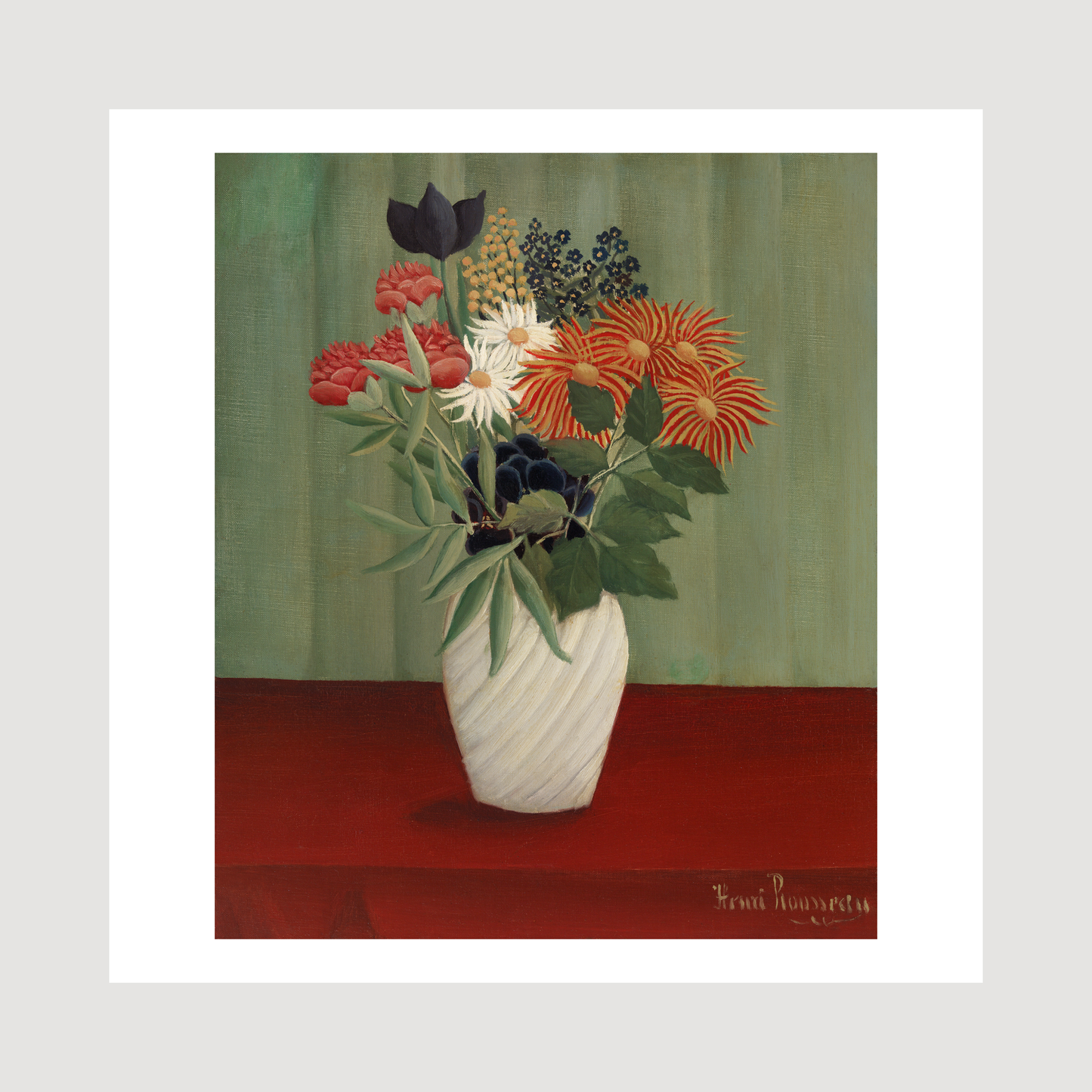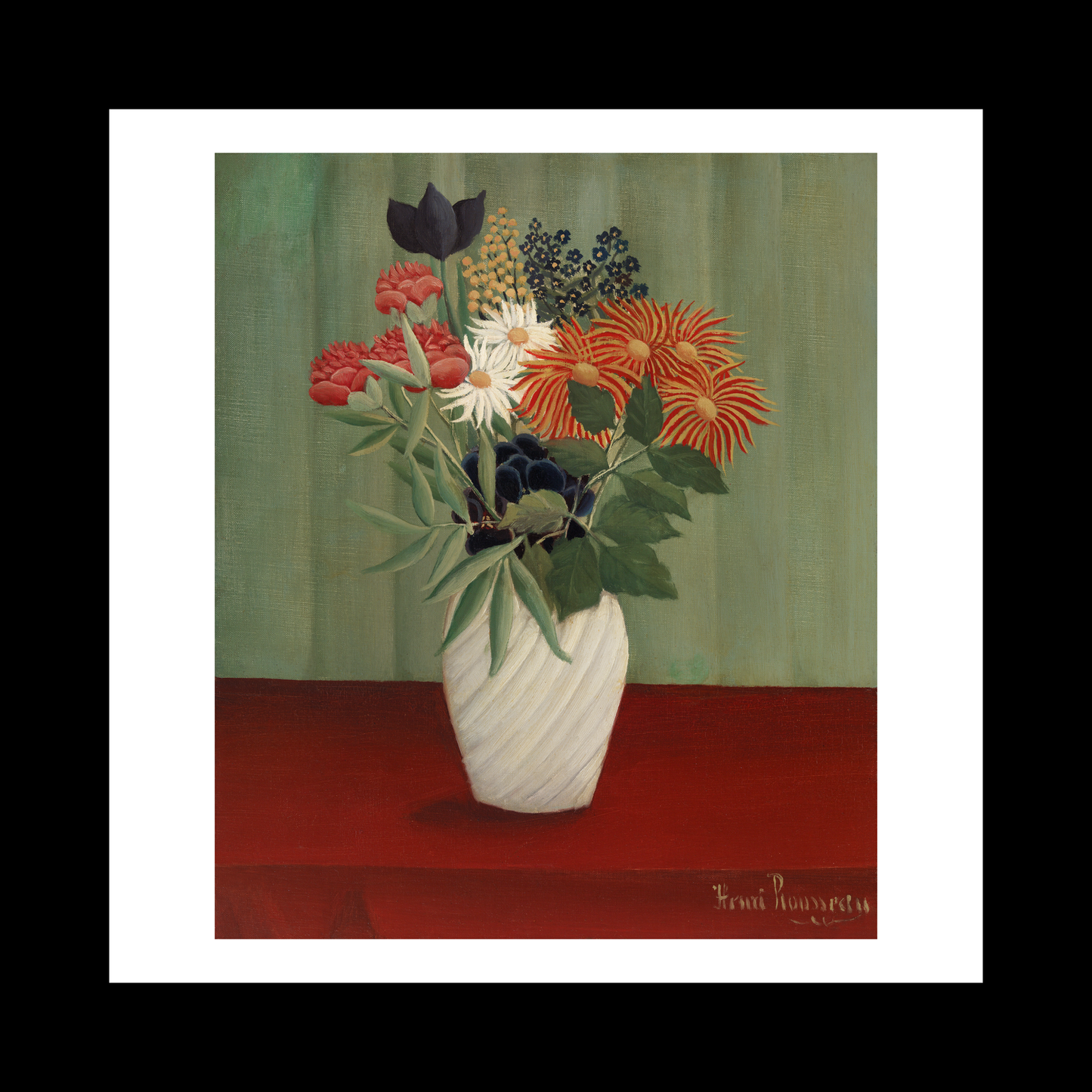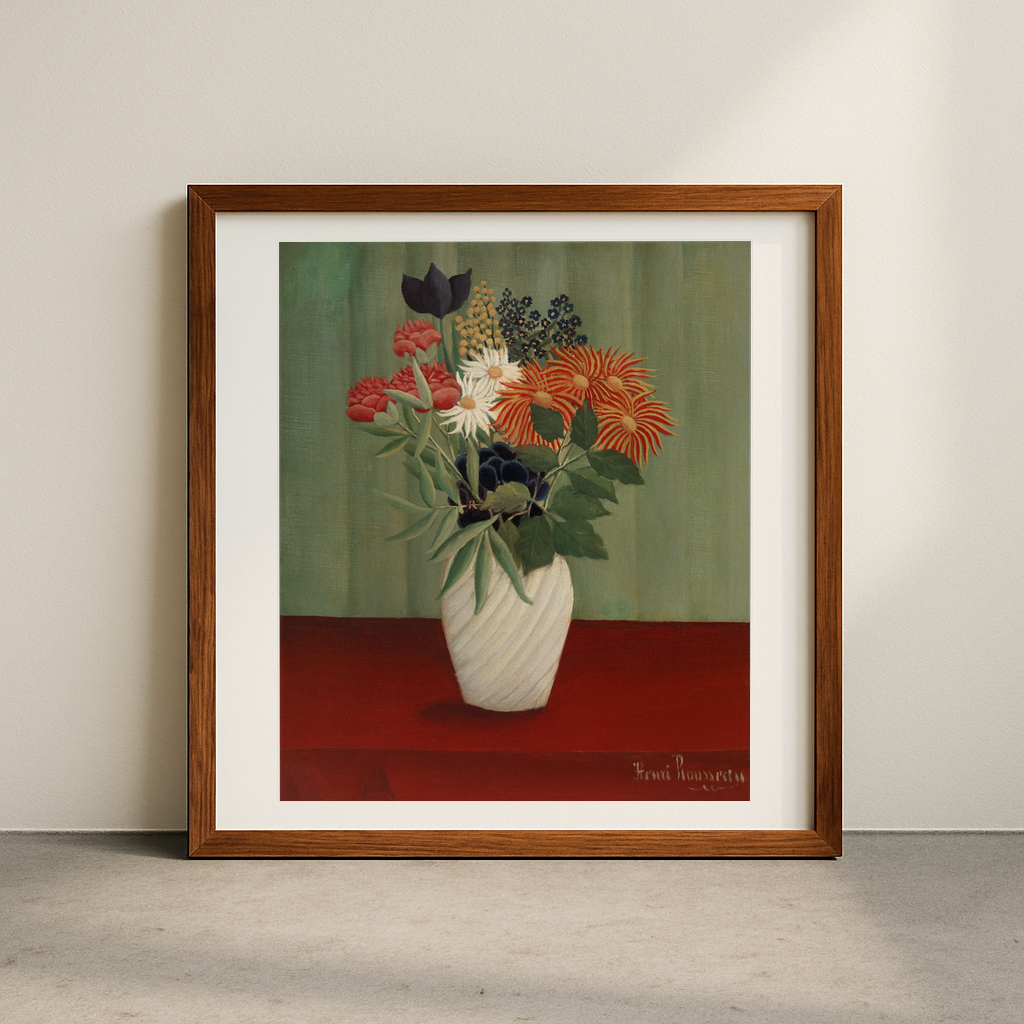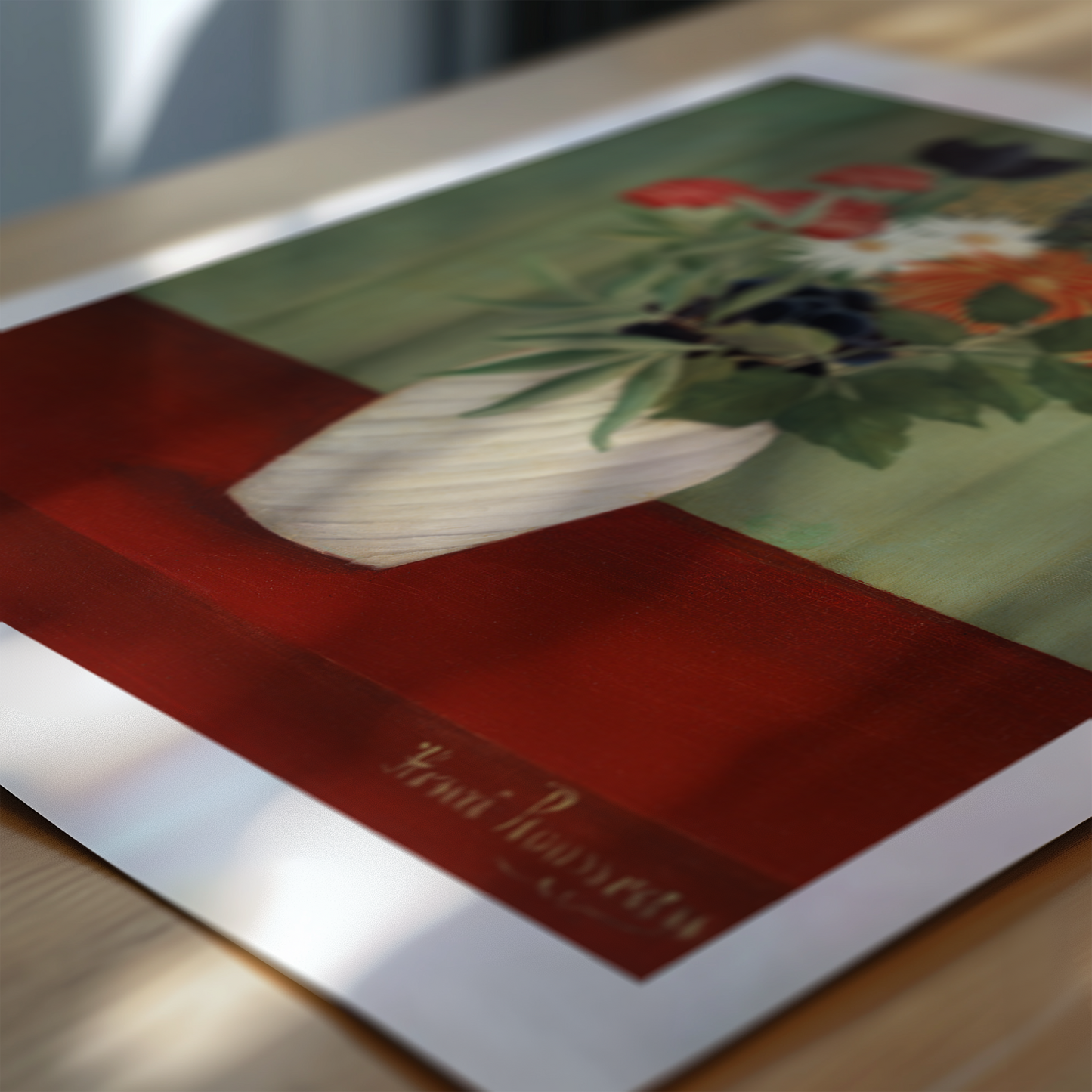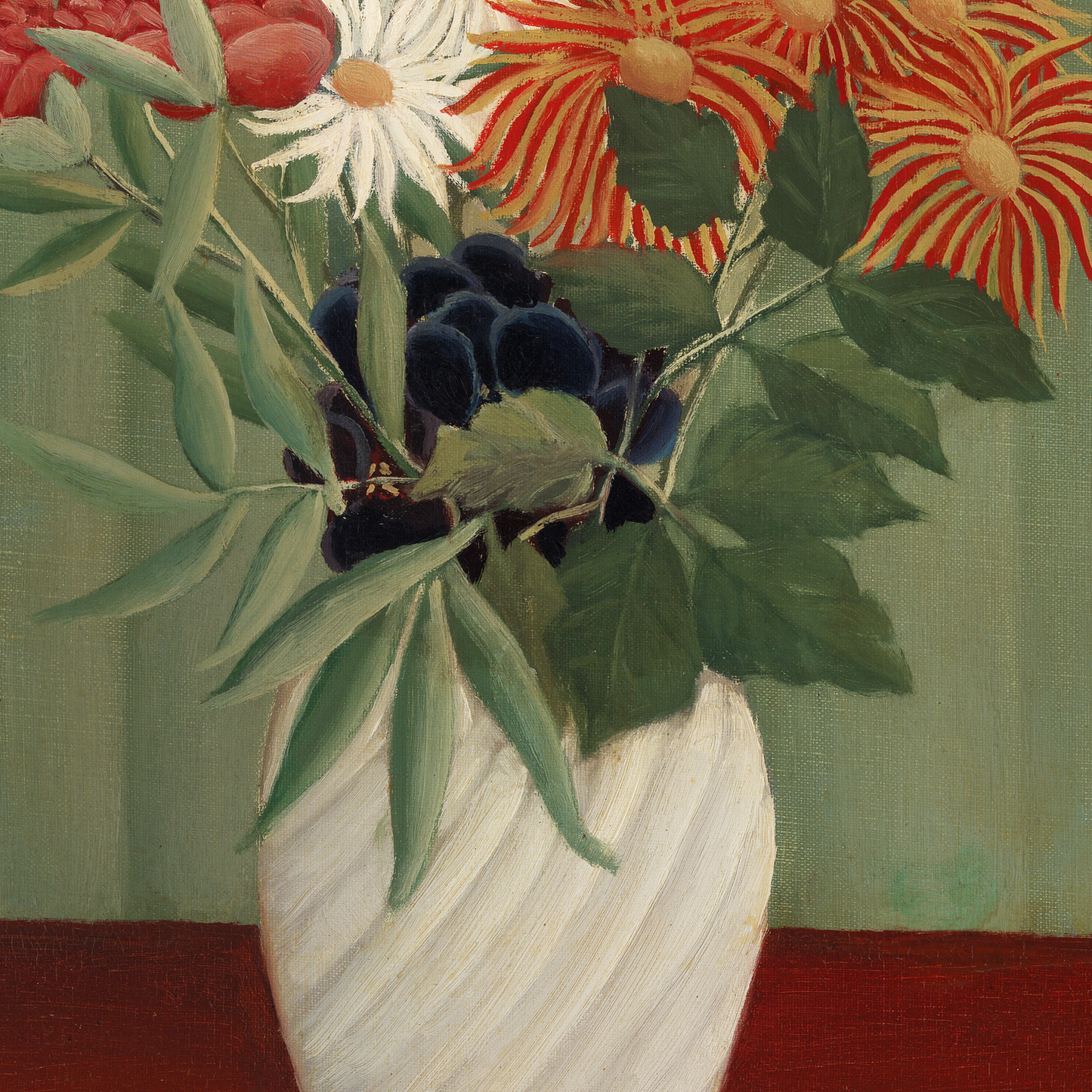1
/
of
6
Bouquet of Flowers with China Asters and Tokyos
Bouquet of Flowers with China Asters and Tokyos
Regular price
£12.45 GBP
Regular price
Sale price
£12.45 GBP
Taxes included.
Quantity
Couldn't load pickup availability
Henri Rousseau's 'Bouquet of Flowers with China Asters and Tokyos' (1910) showcases his distinctive naive art style through a vibrant floral arrangement. The composition features meticulously detailed China asters and Tokyo flowers, rendered with the characteristic precision and flatness that defines Rousseau's unique approach. The flowers are portrayed against a dark background, creating a striking contrast that makes the blooms appear to emerge from the canvas with an almost theatrical presence.
Despite being a self-taught artist who worked as a customs officer, Rousseau developed his own remarkable technique for depicting nature. His lack of formal training resulted in a refreshingly unconventional perspective, where each flower is given equal importance and painted with careful attention to detail. The arrangement appears both natural and slightly otherworldly, reflecting his ability to transform ordinary subjects into extraordinary visions.
This floral study represents a departure from Rousseau's better-known jungle scenes, demonstrating his versatility as an artist. Created during his later years, the painting reflects his mature style and growing confidence in handling botanical subjects. The work embodies the Post-Impressionist movement's shift away from strict naturalism, while maintaining Rousseau's characteristic simplicity and directness. His influence can be seen in the development of modern art, particularly in the ways artists began to embrace non-academic approaches to painting.
The piece reveals Rousseau's deep appreciation for nature's beauty and his ability to capture it in his distinctive style, which combines realistic detail with a somewhat flattened perspective. This approach would later inspire numerous avant-garde artists and help pave the way for modern art movements.
View full details
Despite being a self-taught artist who worked as a customs officer, Rousseau developed his own remarkable technique for depicting nature. His lack of formal training resulted in a refreshingly unconventional perspective, where each flower is given equal importance and painted with careful attention to detail. The arrangement appears both natural and slightly otherworldly, reflecting his ability to transform ordinary subjects into extraordinary visions.
This floral study represents a departure from Rousseau's better-known jungle scenes, demonstrating his versatility as an artist. Created during his later years, the painting reflects his mature style and growing confidence in handling botanical subjects. The work embodies the Post-Impressionist movement's shift away from strict naturalism, while maintaining Rousseau's characteristic simplicity and directness. His influence can be seen in the development of modern art, particularly in the ways artists began to embrace non-academic approaches to painting.
The piece reveals Rousseau's deep appreciation for nature's beauty and his ability to capture it in his distinctive style, which combines realistic detail with a somewhat flattened perspective. This approach would later inspire numerous avant-garde artists and help pave the way for modern art movements.
